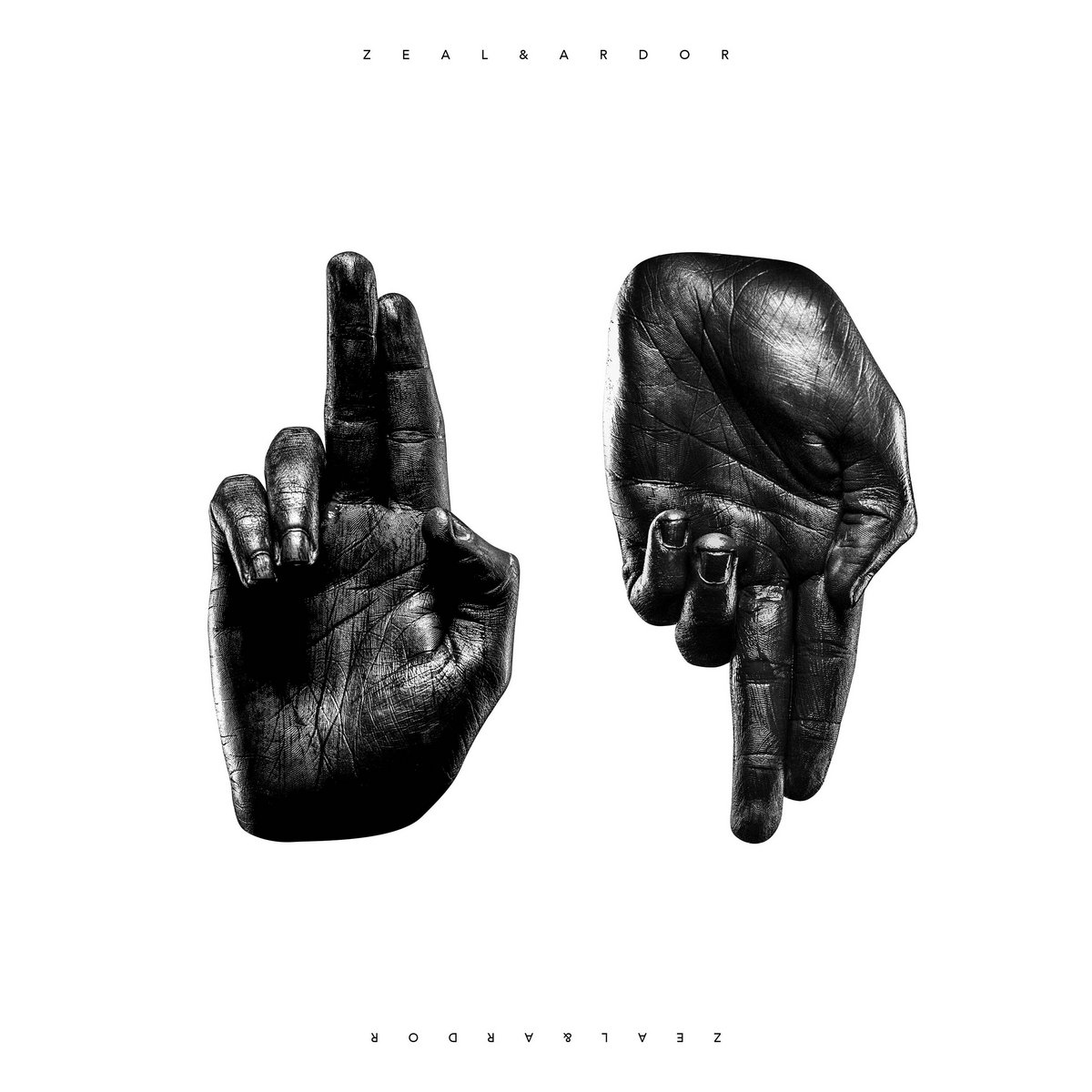‘Imperative’, ‘menacing’, and ‘torrential’ are all words to describe Zeal & Ardor‘s music. And yet, this verbose concoction falls short once the band’s uniquely terrifying blend of black metal, blues-rock and soul bludgeon in real-time. You see, expectations and flowery words are rarely practical when capturing the essence of a Zeal & Ardor record, making them one of the more compelling genre-crossing metal acts today.
For nearly a decade, Zeal & Ardor, fronted by Manuel Gagneux, transcended any expectations and labels placed upon them but still left room for at least one thing to attain — that masterpiece on their horizon. After hearing the outfit’s reactionary but vital EP Wake of a Nation, released while the world reckoned with the deaths of George Floyd and many other Black individuals during the summer of 2020, it was clear the time was nigh for Zeal & Ardor to take final, refined form.
Unfortunately, with the band’s latest self-titled album, the promise of said masterpiece has yet to be manifested. It’s not a lousy offering, as the blistering 14-track collection is dotted with some of their most impressive and exhilarating socio-political mix of black metal and soul to date. Still, this cryptic cauldron of avant-garde metal is boiling over with equal amounts of uninspired radio rock.
Instead of reinforcing the genre blend that has earned Zeal & Ardor their unique stripes, they’ve ruptured the nexus that once made the two divergent worlds of black metal and soul oddly fond of each other. Of course, their mastery of heavy anti-religious music remains entirely their purgative own — so cathartic that it is often a religious experience by default. But after years of offering a seamless formula that married black metal with black spirituals, the outfit have puzzlingly decided to disengage the two, alternating them disjointedly across an overly long record of garbled style and tone, surprisingly bereft of soul.
With more exposure, success, and expectations, there is always the danger of making something palatable to more ears. Obviously, this can work to amass more listeners, but never once has the notion of broader appeal placed itself high on the New York band’s list of priorities. Still, the results suggest otherwise. Gracefully shifting from the pummelling sonics and throaty scowls of black metal to the emotive choruses of soul and blues-rock used to be a thrilling balancing act carried out by Zeal & Ardor. But the very stitching keeping these two worlds together now hangs by a mere loose thread; their recipe for success has been dampened to a toothless and, at times, uninteresting rendering of their stylistic alchemy. And we all know being uninteresting is the greatest of all sins.
On tracks like “Bow” and “Golden Liar”, listeners are offered up an unflattering serving of buttrock in a similar vein of Theory of A Deadman — without the god awful lyricism — crossbred with the commercialized southern rock bastardized by the likes of bands KALEO and X Ambassadors. I swear, 30 seconds into first hearing “Bow,” I closed my eyes and opened them back up only to see a Jeep Grand Cherokee commercial manifested before my very eyes.
Similarly grating, “Church Burns”, despite its striking lyrical imagery, tricked me into thinking that I was hearing Imagine Dragons play heavier while pissed at the world. Though this would be a massive step-up for Imagine Dragons, moments like “Church Burns” are a misstep from Gagneux and the gang. Once upon a time, comparing Zeal & Ardor to the notorious arena rockers was just an old adage for the sake of a good laugh, but the joke has now sprouted legs and learned to walk.
Though this comparison is often perpetuated in the negative, including by yours truly, it should also be spun in the best and most positive way because some of these tracks are undeniably infectious. From the industrial-sheathed “Run” to the explosive propulsion of “Götterdämmerung”, it’s evident Zeal & Ardor won’t be skimping out on their expansive darkness any time soon. These two heavier tracks enthrall with added wrinkles, whether that be an infectious chorus, refrain, or groove to boot.
Beyond those, the record is most impressive when its soulful self is paraded in tandem with its gnarled protruding backbone. In fact, the deceptive twang of both “Death To Holy” and “Feed The Machine” are flawless exhibitions of Zeal & Ardor tapping into their best, two-sided self. When Zeal & Ardor couple terrifying screams and ear-slamming riffs with tremolo guitars and soulful croons within a single song, like “Death To The Holy” and “Feed The Machine”, the band’s cathartic revisionist commentary and emotional grit brands a more lasting impression.
Listeners will get what they pay for regarding the record’s more eviscerating moments, yet they’ll be disappointed by the generic turns that dare not be mentioned again. Still, there’s much to build off from Zeal & Ardor – granted, we’ve been saying that for the past few releases. Nevertheless, Zeal & Ardor are on the cusp of something perfect. Until that moment arrives, we have a loads of good but a lot of bad to sift through.

